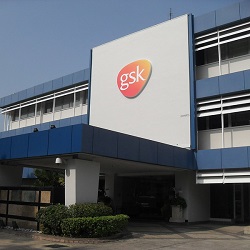
GSK: Claim would not have succeeded
The potential negligence of a QC and high-profile law firm to advise a client on limitation was irrelevant as the underlying claim would not have succeeded anyway, the High Court has ruled.
Augustus Ullstein QC and Hodge Jones & Allen succeeded in their application for summary judgment against Rachel Coote, for whom they acted in her claim alleging a link between the MMR vaccine and her epilepsy.
She was three years old in 1990 when she was diagnosed with epilepsy and developmental regression. With her mother as litigation friend, she began a claim against SmithKline Beecham (SKB) that her disability was caused by the Pluserix MMR vaccine.
Having joined the MMR group action, she issued a writ against SKB on 11 January 1999 with an eye to protecting her position for limitation purposes.
The group action in so far as it claimed a link between the vaccine and autism failed after the research led by Andrew Wakefield was discredited.
But those claiming a link with epilepsy continued and, having obtained expert evidence from Dr Marcel Kinsbourne, Ms Coote served particulars of claim in July 2007; SKB denied the claim and argued that in any case it was statute barred for limitation.
Sitting in Leeds as a High Court judge, His Honour Judge Gosnell recorded: “It would appear (and I put it this way as it is not conceded by the defendants in the professional negligence litigation) that the defendants had believed that the 10-year limitation period under the Consumer Protection Act 1987 ran from the date that the vaccine had been administered to the patient.
“It was subsequently discovered that the limitation period ran from the date the vaccine was shipped from the factory, in this case on 14 December 1988.
“This meant that the writ had been issued out of time and there was no provision to permit the extension of time or any suspension of the limitation period based on the claimant’s disability.”
Ms Coote followed Hodge Jones & Allen’s advice in 2008 to discontinue the claim and sued the firm and the QC for the value of the claim she would have been able to pursue if she had been competently advised.
The defendants argued that she lost nothing as the underlying claim would not have succeeded.
HHJ Gosnell said Ms Coote’s prospects of success in the original litigation hinged on the chances of a court accepting Dr Kinsbourne’s evidence – which he assessed as “nil or virtually nil”.
The judge explained: “He reaches a number of conclusions which are logically unsupportable. I find myself agreeing with my American colleagues that his opinions lack evidential support and that he has a tendency to cherry-pick data which suit his opinion whilst discarding it if it does not.”
It did not help the medic’s credibility that his opinion there was a link in another case was proved wrong by genetic testing, HHJ Gosnell said.
Further, Dr Kinsbourne’s failure to “examine and reflect” on an MRI scan in 2003, which the defendants’ experts said showed a “brain malformation” that could only have happened prior to Ms Coote’s birth, was “fatal to his credibility as a witness”.
The judge continued that this was not a case “where the solicitors have blithely carried on with the claim without advising their client of the hopelessness of the position”.
“I have found that the messaging throughout was mixed and the claimant was advised that there were difficulties in proving that there was clear link between the MMR vaccine and epilepsy…
“Although I have tried to be as generous as I can be in my assessment of the prospects of success, I cannot ignore the fact that Dr Kinsbourne’s evidence would not have stood up to any significant scrutiny.”
In addition, though at some point in time leading and junior counsel advised that the claimant had a 60% chance of success, “the likelihood is that once SKB had served their expert evidence those advising the claimant would have been obliged to report to the Legal Services Commission that the chances of success were now significantly less than 50%.
“This would have resulted in the discharge of the legal aid certificate and the claimant would have been compelled to discontinue the claim as she had no way of funding such expensive and perilous litigation privately.”














Common practice in U K if they think you have a case they withdraw legal aid.